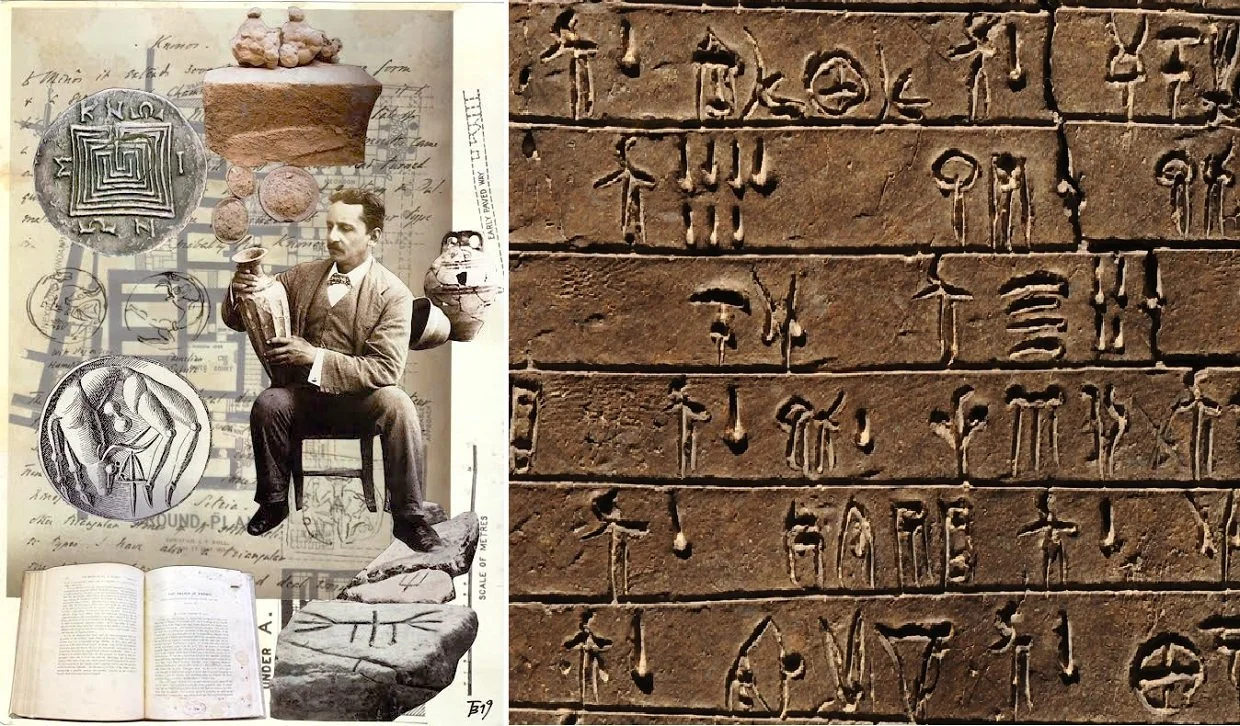Sir Arthur John Evans (8 July 1851 – 11 July 1941) was a British archaeologist and pioneer in the study of Aegean civilization in the Bronze Age. He is most famous for unearthing the palace of Knossos on the Greek island of Crete, after the suggestions of the first excavator of the site, Greek antiquary Minos Kalokairinos.
Based on the structures and artefacts found there and throughout the eastern Mediterranean, Evans found that he needed to distinguish the Minoan civilization from Mycenaean Greece. Evans was the first to define Cretan scripts Linear A and Linear B, as well as an earlier pictographic writing (Cretan hieroglyphs).
It is widely known that Evans does not believe that Linear B encoded an early form of the Greek language during the Late Helladic/Late Minoan period. This denial of the possibility that Linear B encoded the Greek language, led Evans to reject the results of his own research, when he still came very close to decipher this particular script!
After noticing that Linear B and Cyprominoan shared many common symbols, he focused on a two-syllable combination on a Linear B tablet from Knossos, which corresponded to Cyprominoan and was correctly read as [po-lo], polos<«πῶλος» in ancient Greek, meaning “foal”.
Although he succeeded in deciphering the first Greek word of the Mycenaean Linear B script, Evans rejected this reading as clearly erroneous and rather coincidental, according to his hypothesis!
Several years later, of course, Ventris and Chadwick, based on Evans’ first try would contribute to the reading of increasingly long words that more firmly linked Linear B with early Mycenaean Greek. This is how they succeeded and "stole" the glory of the Welsh archaeologist, who wrongly considered impossible such an eventuality.









